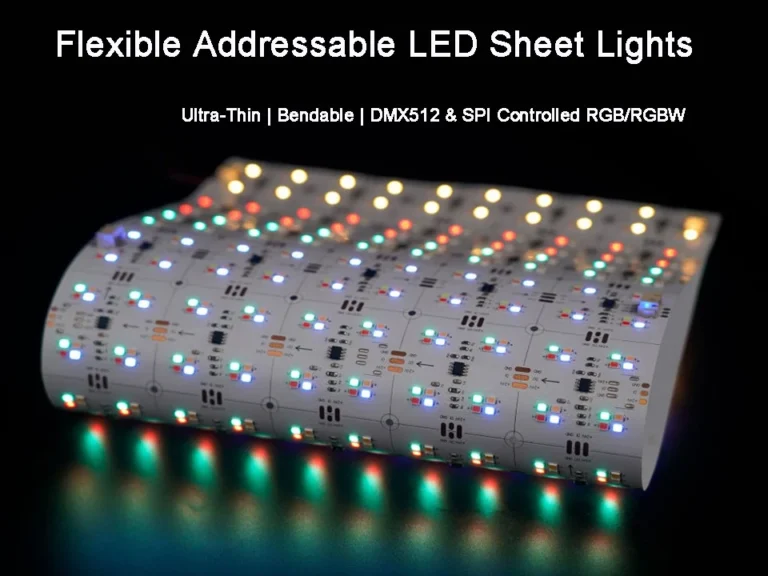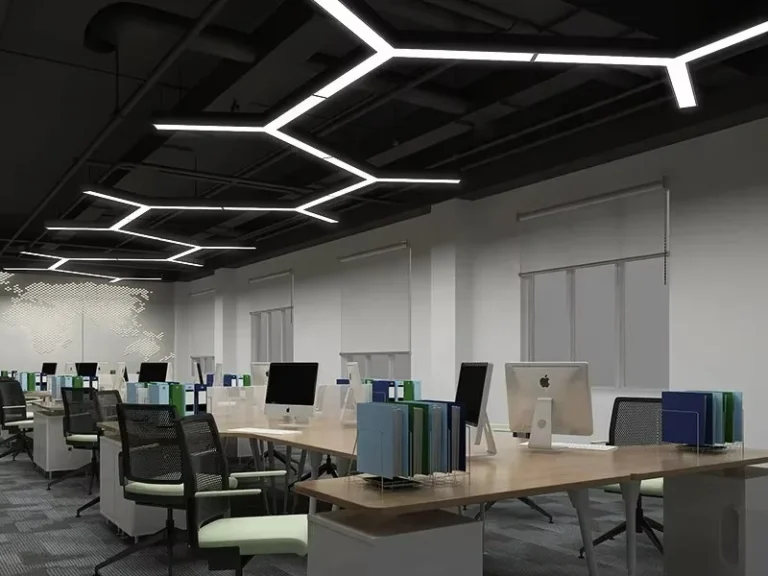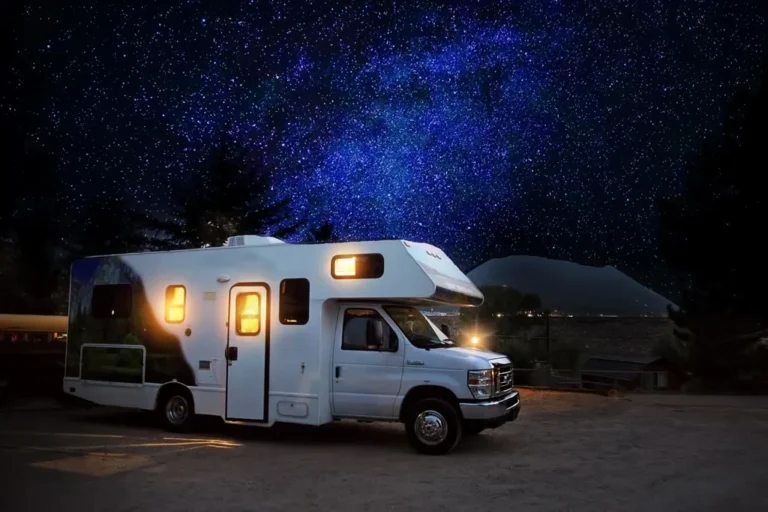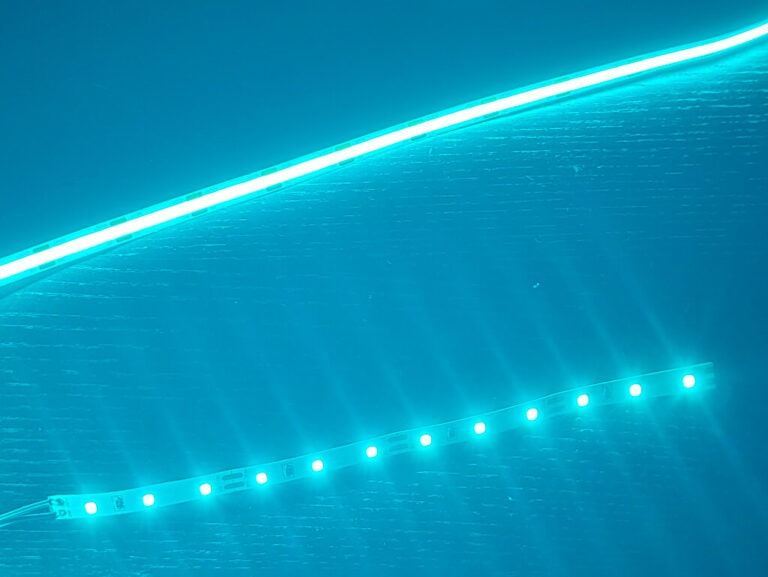ในแสงเชิงพาณิชย์และการออกแบบบ้าน ไฟ LED เชิงเส้นเป็นที่นิยมอย่างกว้างขวางสำหรับการออกแบบที่โฉบเฉี่ยวและการกระจายแสงที่สม่ำเสมอ อย่างไรก็ตาม การละเลยระดับแสงสะท้อนแบบรวม (UGR) อาจนำไปสู่ความล้าทางสายตาหรือแม้กระทั่งอันตรายด้านความปลอดภัย เราสามารถบรรลุประสบการณ์ที่สะดวกสบายในการ "มองเห็นแสงโดยไม่ต้องเห็นแหล่งกำเนิดแสง" โดยการเลือกแสงที่เหมาะสมในทางวิทยาศาสตร์
ตามมาตรฐานสากล สถานการณ์ต่างๆ มีข้อกำหนดที่ชัดเจนสำหรับ UGR สำนักงานและห้องเรียนมักต้องการ UGR≤19 ในขณะที่ห้องแสดงสินค้าระดับไฮเอนด์และโรงพยาบาลบางแห่งมีข้อกำหนดที่สูงกว่าสำหรับ UGR ซึ่งต้องใช้ UGR≤16 ดังนั้น UGR จึงกลายเป็นปัจจัยสำคัญที่ไม่สามารถละเลยได้เมื่อซื้อไฟ LED เชิงเส้น
ไฟ LED เชิงเส้นสามารถบรรลุ UGR น้อยกว่า 19 ได้หรือไม่?
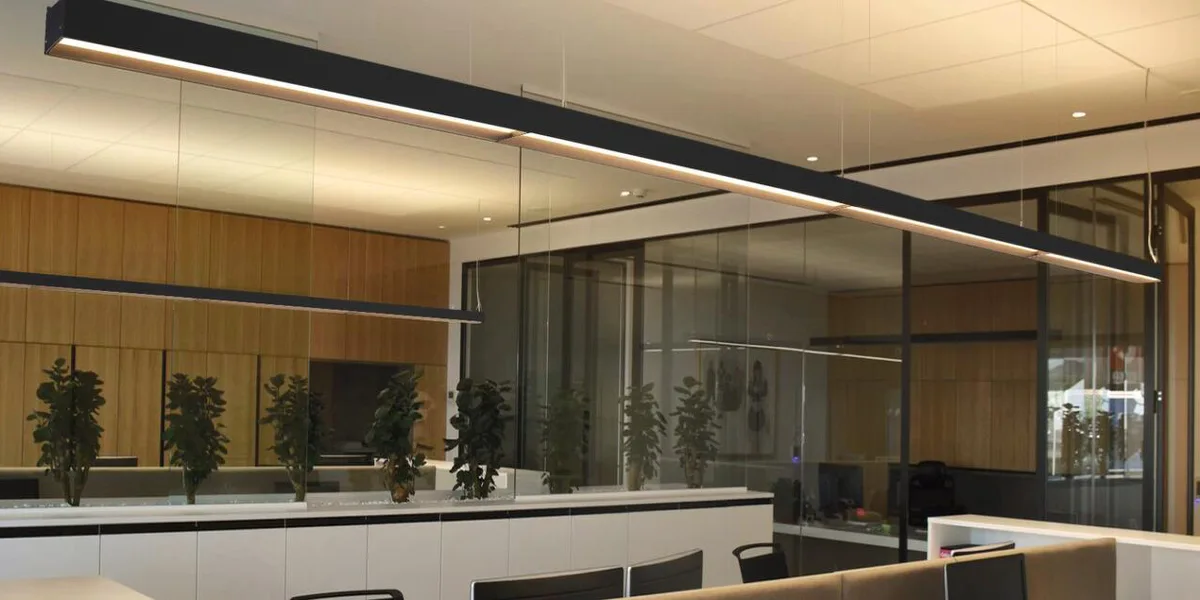
ใช่ ไฟ LED เชิงเส้น สามารถบรรลุ UGR น้อยกว่า 19 ระดับแสงสะท้อนแบบรวม (UGR) เป็นพารามิเตอร์หลักสำหรับการวัดผลกระทบของแสงสะท้อนของแสง สภาพแวดล้อมแสงที่ดีต่อสุขภาพ เช่น สำนักงานต้องใช้ UGR น้อยกว่า 19 เพื่อให้มั่นใจได้ว่าความสบายในการมองเห็น ตัวอย่างเช่น ไฟ LED เชิงเส้นที่ออกแบบมาโดยเฉพาะสำหรับแสงสะท้อนต่ำสามารถทำให้ค่า UGR คงที่ต่ำกว่า 19 ผ่านวัสดุออปติคัลป้องกันแสงสะท้อนที่มีโครงสร้างจุลภาค ซึ่งเป็นไปตามมาตรฐานแสงในอาคาร
อย่างไรก็ตาม ในฐานะแหล่งกำเนิดแสงโดยตรง แสงเชิงเส้นอาจก่อให้เกิดความเสี่ยงหากออกแบบมาอย่างไม่เหมาะสม ดังที่แสดงในข้อมูลการวัดจริงด้านล่าง ค่า UGR ของพวกมันสามารถสูงถึง 22 ได้ ซึ่งเกินขีดจำกัดบนที่แนะนำของ CIE ซึ่งนำไปสู่ความรู้สึกไม่สบาย เช่น การหดตัวของรูม่านตาและปวดหัวบ่อยครั้ง ดังนั้น เมื่อเลือกผลิตภัณฑ์ ขอแนะนำให้จัดลำดับความสำคัญของผลิตภัณฑ์ที่มีป้ายกำกับอย่างชัดเจนว่าเป็นไปตามข้อกำหนดของ UGR
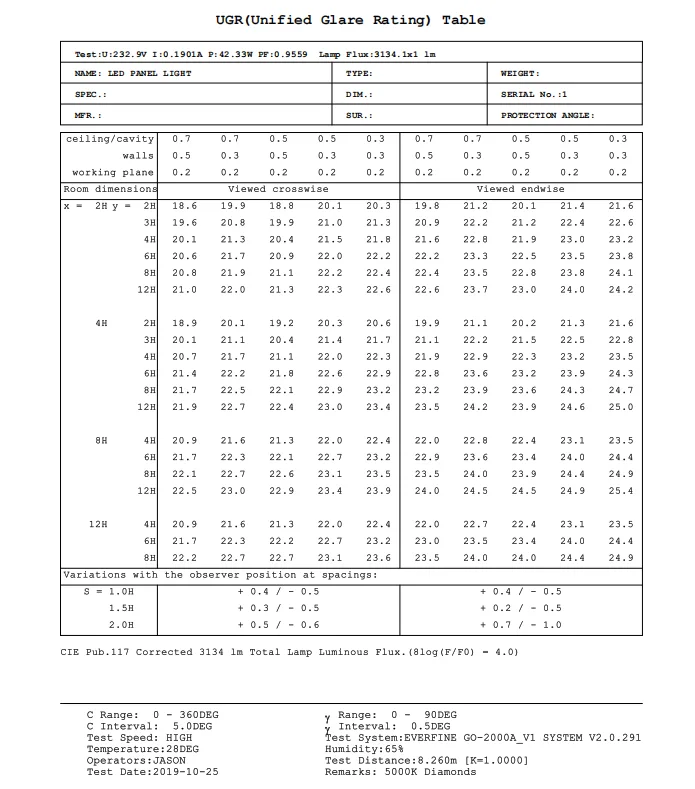
เหตุใดระดับแสงสะท้อน (UGR) ของไฟเชิงเส้นจึงควรน้อยกว่า 19
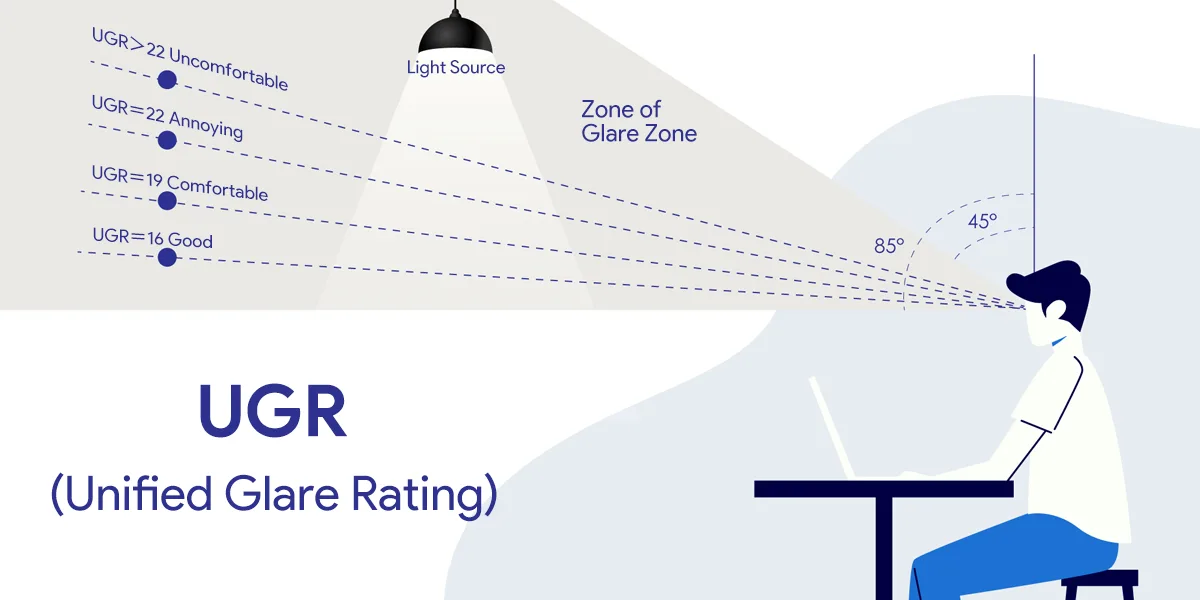
UGR (Uniform Glare Rating) เป็นมาตรฐานที่เป็นที่ยอมรับในระดับสากลสำหรับการประเมินระดับแสงสะท้อนของแสงเชิงเส้นในร่ม ยิ่งค่า UGR ต่ำเท่าใด แสงจ้าก็จะยิ่งอ่อนลง และความสบายในการมองเห็นก็จะยิ่งสูงขึ้น ค่า UGR ได้รับอิทธิพลจากปัจจัยหลายประการ รวมถึงความสว่างของแหล่งกำเนิดแสง ตำแหน่ง และระดับแสงโดยรอบ
เมื่อ UGR เกิน 19 รูม่านตามักจะปรับ นำไปสู่ความเหนื่อยล้าของภาพ การได้รับสารเป็นเวลานานอาจทำให้เกิดความเสียหายต่อจอประสาทตา การมองเห็นเสื่อมสภาพ และความเสี่ยงที่เพิ่มขึ้นของต้อกระจก ในประเทศจีนเพียงประเทศเดียว ซึ่งวัยรุ่นกว่า 60% ประสบปัญหาสายตาสั้น มลภาวะแสงสะท้อนได้รับการระบุว่าเป็นหนึ่งในปัจจัยหลักที่เอื้ออำนวย
มาตรฐานปัจจุบันกำหนดให้ค่า UGR ในสภาพแวดล้อมแสงที่ดีต่อสุขภาพต่ำกว่า 19 ข้อกำหนดสำหรับ UGR ที่น้อยกว่า 19 นั้นขึ้นอยู่กับเหตุผลดังต่อไปนี้:
- มั่นใจได้สบายตา: ค่า UGR 19 ทำเครื่องหมายเกณฑ์ระหว่างแสงสะท้อนปานกลางและมีนัยสำคัญ เมื่อ UGR ≥ 19 ความรู้สึกของแสงที่ส่องแสงจ้าเพิ่มขึ้นอย่างมาก ซึ่งอาจทำให้เกิดความเมื่อยล้าหรือรู้สึกไม่สบายทางสายตา อย่างไรก็ตาม เมื่อ UGR < 19 แสงจ้ายังคงอยู่ในช่วงที่ยอมรับได้ ทำให้เหมาะสำหรับสภาพแวดล้อมเช่นสำนักงานและห้องเรียนที่ต้องใช้โฟกัสเป็นเวลานาน
- ปรับให้เข้ากับความต้องการในสถานที่ทำงาน: ในพื้นที่สำนักงานและสภาพแวดล้อมอื่น ๆ ที่ต้องการงานด้านการมองเห็นที่แม่นยำ UGR ≤ 19 มาตรฐานจะปรับสมดุลความสว่างและความสะดวกสบาย ป้องกันไม่ให้แสงสะท้อนรบกวนประสิทธิภาพการทำงาน ตัวอย่างเช่น มาตรฐาน GB50034-2013 ระบุอย่างชัดเจนว่าขีดจำกัดบนของ UGR สำหรับพื้นที่สำนักงานทั่วไปคือ 19 ซึ่งจำลองประสบการณ์ที่สะดวกสบายของสภาพแวดล้อมที่มีแสงธรรมชาติ
- สถานการณ์การใช้งานที่แตกต่าง: การออกแบบที่ให้คะแนนของค่า UGR จะพิจารณาระดับความคลาดเคลื่อนของสถานที่ต่างๆ— UGR < 19 เหมาะสำหรับสภาพแวดล้อมที่มีความต้องการสูง (เช่น สำนักงาน) ในขณะที่ UGR ≥ 19 ซึ่งทำให้เกิดแสงสะท้อนที่เห็นได้ชัดเจน แนะนำให้ใช้เฉพาะกับโรงงานอุตสาหกรรมหรือร้านค้าที่มีความต้องการด้านความสบายในการมองเห็นต่ำกว่า
ค่า UGR ให้คะแนนอย่างไร?
การจัดระดับความสะดวกสบายของค่า UGR (Uniform Glare Rating) ถูกกำหนดโดยมาตรฐานสากลอย่างชัดเจน เกณฑ์ความสะดวกสบายเฉพาะและสถานการณ์ที่เกี่ยวข้องมีดังนี้:
เมื่อ UGR < 13 แสงจะอ่อนลง และดวงตาของมนุษย์แทบจะมองไม่เห็นแสงสะท้อน เหมาะสำหรับพื้นที่ที่มีความต้องการด้านความสบายในการมองเห็นสูงมาก เช่น หอศิลป์และที่พักระดับไฮเอนด์
เมื่อ UGR < 16 จะอยู่ในช่วงความสบาย โดยมีแสงสะท้อนเล็กน้อยที่ไม่ทำให้งานมองเห็นได้บกพร่อง นี่เป็นมาตรฐานที่แนะนำสำหรับห้องเรียน ห้องอ่านหนังสือ และสภาพแวดล้อมอื่นๆ ที่ต้องการการทำงานที่แม่นยำ ตัวอย่างเช่น ไฟแผงป้องกันตาในห้องเรียนต้องควบคุม UGR ≤ 16 เพื่อปกป้องวิสัยทัศน์ของวัยรุ่น
ค่า UGR และการรับรู้สถานะของมนุษย์
| ช่วง UGR | การรับรู้ของมนุษย์ | ตัวอย่างสถานการณ์สมมติที่ใช้ได้ |
| UGR <13 | ไม่มีแสงสะท้อนที่มองเห็นได้ | โรงพยาบาล หอนิทรรศการ ระดับไฮเอนด์ สถาบันพิเศษ |
| 13 ≤ UGR ≤ 16 | แสงจ้า | โรงพยาบาลศูนย์กิจกรรมอาวุโส |
| 16 ≤ UGR < 19 | แสงจ้าปานกลาง ยอมรับได้ แต่อาจทำให้เมื่อยล้า | สำนักงานสามัญห้องประชุม |
| 19 ≤ UGR < 22 | เกณฑ์สำหรับความรู้สึกไม่สบายที่เห็นได้ชัดเจน | โรงงานอุตสาหกรรม, โกดัง |
| UGR ≥ 22 | แสงจ้ารุนแรงทำให้ปวดหัว | หลีกเลี่ยงการครอบครองมนุษย์เป็นเวลานาน |
เกณฑ์ทางจิตวิทยาระหว่างความสบายและความรู้สึกไม่สบายคือ UGR = 19 แต่สภาพแวดล้อมทางสายตาที่ดีต่อสุขภาพ (เช่น พื้นที่การเรียนรู้) ควรมุ่งเป้าไปที่ UGR ≤ 16
มาตรฐานบังคับสำหรับสถานการณ์การใช้งาน:
- สิ่งอำนวยความสะดวกทางการศึกษา: UGR บังคับ ≤ 19 สำหรับห้องเรียน โซลูชันแสงคุณภาพสูงควรได้รับการปรับให้เหมาะสมเป็น ≤ 16;
- สภาพแวดล้อมในสำนักงาน: UGR > 19 ทำให้เกิดการหดตัวของรูม่านตาบ่อยครั้งซึ่งนำไปสู่ความเหนื่อยล้าของภาพ คะแนนที่มีคุณสมบัติคือ ≤ 19;
- แหล่งอุตสาหกรรม: UGR ≤ 22 ได้รับอนุญาต แต่ต้องใช้อุปกรณ์เสริมป้องกันแสงสะท้อนเพื่อลดความเสี่ยงต่อสุขภาพ
คำแนะนำในการป้องกันแสงสะท้อน
| แนว | หลักวิชาการ | ผลการลด UGR |
| แผงกระจายไมโครปริซึม | สลายลำแสงความเข้มสูง | ลดเหลือ ≤16 |
| การออกแบบแสงทางอ้อม | หลีกเลี่ยงโซนรบกวน 30° รอบดวงตามนุษย์ | ลด 30% |
| วัสดุโลว์กลอส | ลดแสงสะท้อนจากสิ่งแวดล้อม | ปรับให้เหมาะสม 2-3 จุด |
หมายเหตุ: การวัด UGR ต้องใช้โฟโตมิเตอร์แบบกระจายพร้อมเลนส์ฟิชอาย จำเป็นต้องมีการสอบเทียบหากข้อผิดพลาดเกิน ±10%
ข้อกำหนด UGR สำหรับแสงเชิงเส้นในยุโรปและสหรัฐอเมริกา
ยุโรปและสหรัฐอเมริกามีมาตรฐานการจัดเกรดที่ชัดเจนสำหรับข้อกำหนด UGR สำหรับไฟ LED เชิงเส้น กฎระเบียบและจุดดำเนินการเฉพาะมีดังนี้
มาตรฐานการคัดเกรด UGR บังคับ
มาตรฐานแกนสหภาพยุโรป: แสงเชิงเส้นในร่มทั้งหมดต้องเป็นไปตามเกณฑ์ความปลอดภัยขั้นต่ำของ UGR ≤ 19 เกินค่านี้จะส่งผลให้ไม่ได้รับการรับรอง CE สถานที่พิเศษมีข้อกำหนดที่เข้มงวดกว่า: พื้นที่การศึกษา/สำนักงาน: UGR ต้องเป็น ≤16 เช่น ห้องเรียนและสำนักงานแบบเปิดโล่ง หอศิลป์/สถานพยาบาล: UGR ต้องเป็น ≤13 และต้องใช้โครงสร้างป้องกันแสงสะท้อนของรังผึ้ง
ข้อกำหนดพิเศษของอเมริกาเหนือ: มาตรฐาน UL 1598 กำหนดให้ติดตั้งไฟ LED อย่างชัดเจนเพื่อควบคุมอันตรายจากแสง (ยกเว้นแถบความยาวคลื่น 4400-780 นาโนเมตร) การรับรอง Energy Star กำหนดให้มีการจัดวางแสงเชิงพาณิชย์เพื่อให้มี UGR ≤ 22 และต้องระบุระดับแสงสีน้ำเงิน (ระดับการยกเว้น RG0 ได้รับการจัดลำดับความสำคัญ)
ข้อกำหนดการยอมรับการวัด UGR
| เรื่อง | มาตรฐานสหภาพยุโรป | ข้อกำหนดเพิ่มเติมในอเมริกาเหนือ |
| ความสูงในการสังเกต | นั่ง 1.2M / ยืน 1.5M | ยึดตามมาตรฐาน CIE 117-1995 |
| อุปกรณ์วัด | 143° มุมมองภาพมิเตอร์ความสว่าง | ต้องผ่านการสอบเทียบโฟโตเมตริก UL |
| การแก้ไขความสว่างพื้นหลัง | ขจัดสัญญาณรบกวนจากอุปกรณ์ติดตั้งโดยตรง | เพิ่มรายการตรวจจับการสะท้อนกระจก |
การเปรียบเทียบมาตรฐาน UGR ระหว่างยุโรปและอเมริกาเหนือ
| ตัวบ่งชี้ | ยู | อเมริกาเหนือ |
| ความเข้มแข็งในการบังคับใช้ | UGR > 19 ห้ามไม่ให้มีการหมุนเวียนของตลาด | การรับรอง Energy Star บังคับใช้โดยสมัครใจ |
| เน้นทางเทคนิค | การควบคุมแสงสะท้อน (UGR) เป็นแกนกลาง | ความปลอดภัยของเซลล์แสงอาทิตย์ + การควบคุมประสิทธิภาพพลังงานแบบคู่ |
| อัพเกรดทิศทาง | ใช้ UGR ≤ 16 ภายในปี 2025 | เสริมสร้างมาตรฐานความปลอดภัยสำหรับอุปกรณ์เสริมแบตเตอรี่ปุ่ม (UL4200A) |
| เกณฑ์หลัก | UGR ≤ 19 เกณฑ์บังคับ (ข้อกำหนดพื้นฐานการรับรอง CE) | ไม่มีเกณฑ์บังคับระดับรัฐบาลกลาง Energy Star แนะนำ ≤ 22 |
| ข้อกำหนดสถานการณ์พิเศษ | สถานศึกษา/การแพทย์ UGR ≤ 13 | ไฟส่องสว่างอุตสาหกรรมอนุญาต UGR ≤ 25 (ต้องเป็นไปตามมาตรฐานความปลอดภัยทางไฟฟ้า UL 1598) |
เกี่ยวกับสายตา พีผู้ใช้อารามิโซ ซ.การรวบรวม
- อียู: การใช้เครื่องวัดความส่องสว่างในมุมมองภาพ 143° เพื่อขจัดสัญญาณรบกวนจากแสงโดยตรงจากโคมไฟ
- อเมริกาเหนือ: ต้องผ่านอุปกรณ์สอบเทียบโฟโตเมตริก UL และเพิ่มการตรวจจับการสะท้อนกระจก
อ้างอิงการสังเกต
- สหภาพยุโรปใช้ความสูงนั่ง 1.2 ม./ความสูงยืน 1.5 ม. สำหรับระดับสายตา
- อเมริกาเหนือสอดคล้องกับมาตรฐานของสหภาพยุโรป แต่อนุญาตให้ผู้ผลิตกำหนดความสูงการทดสอบของตนเอง (ขึ้นอยู่กับการลงทะเบียน)
ประเทศในยุโรปจะใช้ข้อกำหนดบังคับสำหรับเพดานกระจกที่มีความครอบคลุม UGR≤16 (รวมถึงพื้นที่เชิงพาณิชย์) เริ่มในปี 2568: ความสว่างของพื้นผิวโคมไฟ ≤2000 CD/m²; โคมไฟฝ้าที่มีการสะท้อนแสง <60%
โคมไฟที่ควบคุมด้วยระบบไร้สายต้องปฏิบัติตามเพิ่มเติม: การรับรองความถี่วิทยุ FCC (47 CFR ส่วนที่ 15) และอุปกรณ์เสริมแบตเตอรี่เซลล์ปุ่มต้องสอดคล้องกับ UL 4200A3
การแจ้งเตือนแนวโน้ม: กฎระเบียบใหม่ของสหภาพยุโรปในปี 2568 จะรวมความปลอดภัยของแสง (RG0) ไว้ในระบบการประเมิน UGR และอเมริกาเหนือจะอัพเกรดมาตรฐานการควบคุมแสงสีน้ำเงิน UL 153 พร้อมกัน
วิธีการวัดค่า UGR ของไฟ LED เชิงเส้น?
ค่า UGR ของ ไฟ LED เชิงเส้น มักวัดโดยใช้เครื่องวัดแสง goniophotometer ซึ่งสามารถรับข้อมูลโฟโตเมตริกและจำลองการคำนวณโดยใช้ซอฟต์แวร์มาตรฐาน ต่อไปนี้เป็นขั้นตอนการทดสอบและประเด็นสำคัญ:
ยึดโคมไฟเชิงเส้นเข้ากับเมาท์หมุนของเครื่องวัดแสง goniophotometer โดยการหมุนฟิกซ์เจอร์หรือรีเฟล็กเตอร์ ให้จับข้อมูลการกระจายความเข้มของแสงในพื้นที่ 360° สร้างไฟล์โฟโตเมตริกรูปแบบ IES ที่มีพารามิเตอร์ต่างๆ เช่น ฟลักซ์ส่องสว่างและการกระจายความเข้มของแสง
ไฟเชิงเส้นยาวมักจะอยู่ในหมวดหมู่ของอุปกรณ์ติดตั้งแบบสมมาตรสองแกน (เช่น ไฟแผงยาว) ที่ต้องทดสอบเส้นโค้งการกระจายแสงสำหรับระนาบสมมาตรสองระนาบ: ระนาบตามยาว (C0-C180) และระนาบขวาง (C90-C270)
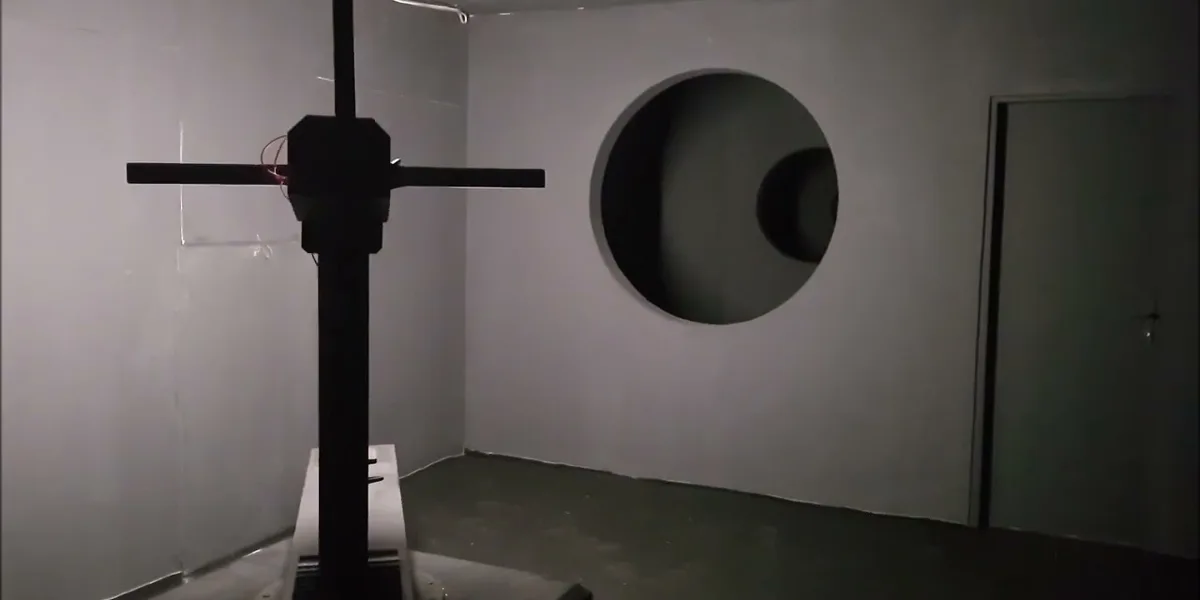
การตรวจสอบความถูกต้องของข้อมูล
ตรวจสอบให้แน่ใจว่าไฟล์ IES มีข้อมูลการกระจายแสงที่สมบูรณ์ (เช่น มุมขอบครึ่งพีคและมุมการแพร่กระจายของลำแสง) และมุมของแข็งที่ส่องสว่าง ω ของโคมไฟอยู่ในช่วง 0.0003 ถึง 0.1 SR เพื่อให้เป็นไปตามเงื่อนไขการคำนวณ UGR
การนำเข้าไฟล์ IES ลงในซอฟต์แวร์จำลองสถานการณ์
เมื่อโหลดไฟล์ IES ของโคมระย้าเชิงเส้นลงในซอฟต์แวร์ระดับมืออาชีพ เช่น Dialux ให้ยืนยันว่าไฟล์อยู่ในรูปแบบสมมาตรอย่างสมบูรณ์หรือแบบสองแกน (คู่สมรสไม่สมมาตรไม่สามารถสร้างตาราง UGR ได้) หากไฟล์ IES ไม่ปรับโดยอัตโนมัติ ให้ปรับสมมาตรโดยใช้เครื่องมือแก้ไข
ตั้งค่าสภาพแวดล้อมการจำลองมาตรฐาน
ตามมาตรฐาน CIE 117-1995 ให้สร้างห้องเสมือนและกำหนดพารามิเตอร์ที่สำคัญ:
- มิติพื้นที่: ตั้งค่าความยาวและความกว้างแบบไดนามิกตาม x=2H, 4H, 8H, 12H (โดยที่ H คือความสูงจากตาของผู้สังเกตไปจนถึงความสูงของการติดตั้งโคมไฟ);
- ภาวนา: ป้อนค่าสัมประสิทธิ์การสะท้อนแสงจริงสำหรับเพดานและผนัง (ค่าเริ่มต้น: เพดาน 0.7, ผนัง 0.5);
- ผู้สังเกตการณ์ตำแหน่ง: รักษาแนวสายตาในแนวนอนด้วยระยะห่างเริ่มต้นจากจุดศูนย์กลางของโคมไฟ
- การสร้างตาราง UGR และการแก้ไข: ซอฟต์แวร์ส่งออก "ตารางการประเมินความสว่างของ UGR อ้างอิง" (ตาราง UGR ที่ไม่ได้รับการแก้ไข) ซึ่งแสดงถึงค่าทางทฤษฎีสำหรับแหล่งกำเนิดแสงเปล่าที่ฟลักซ์การส่องสว่าง 1,000 lm
- สูตรการแก้ไข UGR จริง: UGR จริง = ค่าตาราง + 10 × log (ฟลักซ์แสงจริงของโคมไฟ / 1000) ตัวอย่างเช่น เมื่อฟลักซ์แสงของโคมไฟคือ 2,000 lm ให้เพิ่ม 3 ให้กับค่าตาราง (10 × log 3)
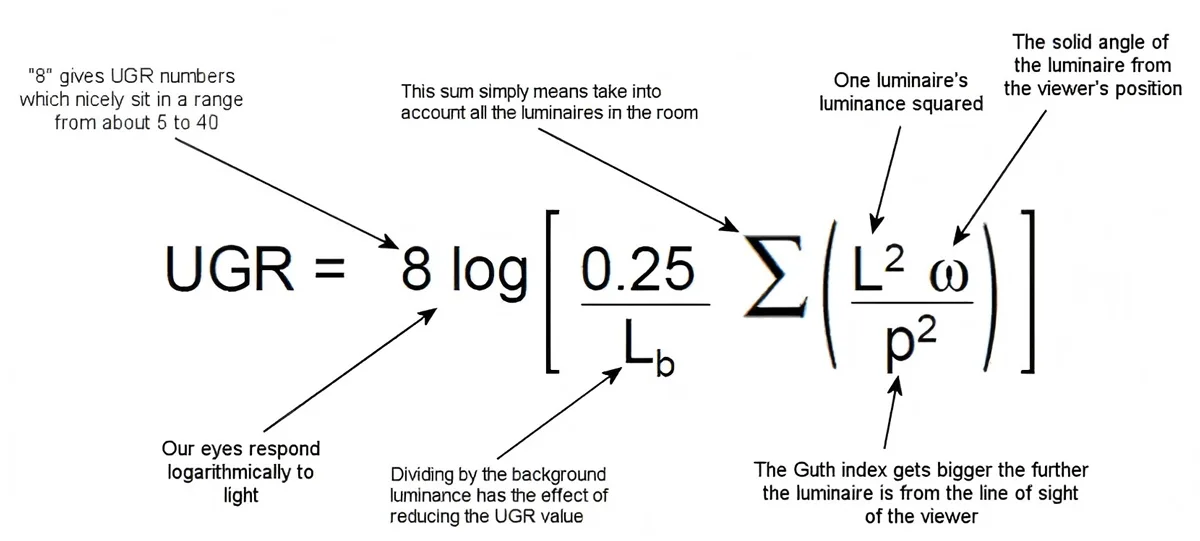
- ข้อจำกัดของแอปพลิเคชัน: UGR ใช้ได้กับสภาพแวดล้อมในร่มและโคมไฟสมมาตรทวิภาคีเท่านั้น โคมไฟเชิงเส้นพร้อมการออกแบบโพลาไรซ์ (เช่น โคมไฟล้างผนังแบบกระจายแบบไม่สมมาตร) ไม่สามารถประเมินได้โดยตรงโดยใช้วิธีนี้
- ความแตกต่างระหว่าง UGR ที่วัดได้และผลการจำลอง: ผลการจำลองเป็นค่าอ้างอิงด้านสิ่งแวดล้อมมาตรฐาน การติดตั้งจริงได้รับอิทธิพลจากมิติเชิงพื้นที่วัสดุสะท้อนแสง ฯลฯ
จะลดค่า UGR ของไฟเชิงเส้นได้อย่างไร?
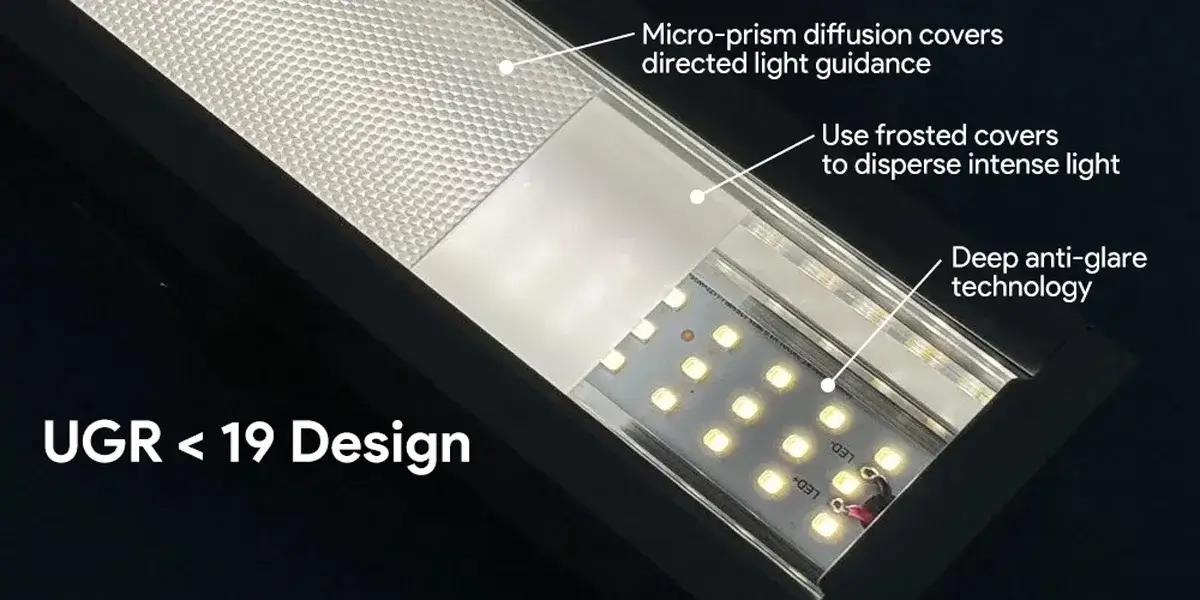
- การเพิ่มประสิทธิภาพโครงสร้างทางแสง: ใช้การออกแบบมุมกระจกและเทคโนโลยีป้องกันแสงสะท้อนลึกด้วยมุมแสง ≥25 ซม. เพื่อปิดกั้นแสงโดยตรงไม่ให้ไปถึงดวงตา สำหรับการตั้งค่าทางอุตสาหกรรม ขอแนะนำให้ติดตั้งไฟที่ความสูง ≥3.5 ม. และรวมเข้ากับแผ่นสะท้อนแสงเพื่อลดแสงสะท้อน
- ผิวนอก ทททการซ่อมแซม ทททเทคโนโลยี: ใช้ตาข่ายป้องกันแสงสะท้อนของรังผึ้งเพื่อทำให้แสงสะท้อนที่หลงทางลดลง ได้ 30% ใน UGR (เหมาะสำหรับสภาพแวดล้อมที่มีแสงสะท้อนสูง) หรือใช้โคมไฟเคลือบฝ้า/ด้านเพื่อกระจายแสงที่รุนแรงเพื่อให้การแพร่กระจายของแสงสม่ำเสมอด้วยแสงสะท้อนพื้นผิว <60%;
- จุลพีเขตที่ตั้ง แช่งการแสดงกำลัง พีแอนเนล: คำแนะนำแสงโดยตรง ลด UGR จาก 21 เป็น 14
- การติดตั้งและ ล.เรืออายุ ซ.บังคับบัญชา: จัดลำดับความสำคัญของการติดตั้งแบบฝังเพื่อหลีกเลี่ยงหลอดไฟที่เปิดอยู่ ควรฝังไฟเชิงเส้นในเพดานหรือผนัง (ความลึกที่ฝัง ≥2 ซม.) เมื่อติดตั้งบนพื้นผิวแล้วต้องใช้เลนส์โพลาไรซ์เพื่อส่องแสงไปยังพื้นผิวการทำงาน ต้องไม่วางโคมไฟภายในระดับสายตา 30° (ความสูง ≥1.8 ม. เหนือพื้นดินปลอดภัยกว่า) เพดานกระจกจะต้องจับคู่กับโคมไฟที่มีฝ้าเพื่อระงับแสงสะท้อนรอง
- การควบคุมวัสดุผนัง: ใช้สีเคลือบ (สะท้อนแสง <60%) หลีกเลี่ยงวัสดุที่มีการสะท้อนแสงสูง เช่น ผนังหรือกระเบื้องสีขาว ติดตั้งช่องแสงสะท้อนโค้งเพื่อแปลงแสงโดยตรงเป็นแสงแบบกระจาย (วัด UGR ลดลงจาก 21 เป็น 13)
- RG0-ล.ความร่าเริง ข.ขี้ปลาม้า ล.ทันที ซ.บังคับบัญชา: ใช้แหล่งกำเนิดแสงแบบเต็มสเปกตรัมเพื่อลดการกระตุ้นด้วยแสง
- เจ็บเสียว แช่งฉับพลัน สystem: ลดคอนทราสต์ในพื้นที่ที่มีความสว่างสูงแบบไดนามิก (ต้องได้รับการรับรอง FCC/CE)
- ตัวโน้ต: หลอดไฟ LED โปร่งใสเป็นแหล่งกำเนิดแสงและอาจทำให้เกิดแสงจ้าอย่างรุนแรง หลีกเลี่ยงการจัดเรียงที่มีกำลังสูงโดยมีระยะห่างของหลอดไฟ≥ 1.5 เท่าของความกว้างของโคมไฟ พื้นผิวสะท้อนแสงเช่นเฟอร์นิเจอร์กระจกโต๊ะและหน้าจอควรถูกชดเชยจากมุมฉายของโคมไฟ
- ผล รถไฟฟ้าการทำให้เป็นจริง: วัดค่า UGR ที่แก้ไขแล้วโดยใช้เครื่องวัดความส่องสว่างของภาพจากมุมมองภาพ 143° เพื่อให้แน่ใจว่า ≤19 (สำนักงาน) หรือ ≤13 (การแพทย์/การศึกษา)
นอกจากนี้ เพื่อให้เป็นไปตาม UGR ≤19 โครงการแสงสว่างต้องใช้การควบคุมสามเทคโนโลยี:
- เกี่ยวกับสายตา แช่งลา: ใช้แผ่นกระจายแสงที่มีโครงสร้างขนาดเล็กเพื่อลดความสว่างของพื้นผิว
- กระบวน: หลีกเลี่ยงโซนการรบกวนของดวงตามนุษย์ (ภายในระยะ 30° ขึ้นไปด้านบน)
- วัตถุ สการลงคะแนนเสียง: ใช้วัสดุเคลือบเงาต่ำเพื่อลดแสงสะท้อน ตัวอย่างเช่น แสงในห้องเรียนได้รับคำสั่งให้ใช้ UGR ≤ 19 (มาตรฐานแห่งชาติ GB7793-2010) ในขณะที่อุปกรณ์ติดตั้งระดับไฮเอนด์ (เช่นไฟถนน) ได้รับการปรับให้เหมาะสมกับ UGR ≤ 16 เพิ่มเติม
- การเพิ่มประสิทธิภาพทางแสง: ติดตั้งแผงกระจายไมโครปริซึม: UGR สามารถลดลงจาก 21 เป็น 14 ใช้เลนส์โพลาไรซ์: การตั้งค่าอุตสาหกรรมช่วยให้ UGR ≤ 25 แต่ต้องจับคู่กับผนังที่มีการสะท้อนแสง ≤ 60%
- ข้อห้ามในการติดตั้ง: ห้ามวางโคมไฟเปล่าภายใน 30° แนวนอนของสายตามนุษย์ ความสูง 1.8 เมตรเหนือพื้นดินปลอดภัยกว่า ในการตั้งค่าเพดานกระจกต้องใช้โคมไฟฝ้า
ข้อดีหลักสี่ประการของ Linear Line Line ของ Signliteled
ประสิทธิภาพทางแสงที่ยอดเยี่ยม: ด้วยการออกแบบลดแสงสะท้อนด้วย UGR < 19 แสงจะกระจายอย่างสม่ำเสมอผ่านแผงกระจายแสงแบบปริซึม เสริมด้วยระบบเลนส์ออปติคัลที่มีความแม่นยำสูงซึ่งควบคุมความคมชัดของจุดแสงได้อย่างมีประสิทธิภาพ บรรลุมาตรฐานการปราบปรามแสงสะท้อนระดับพิพิธภัณฑ์
การออกแบบโครงสร้างระดับอุตสาหกรรม: สร้างขึ้นด้วยโปรไฟล์อลูมิเนียมเกรดอากาศยานและเทคโนโลยีการเคลือบนาโน ให้คะแนนการป้องกัน IP66 ซึ่งสามารถทนต่อสภาพแวดล้อมที่รุนแรงได้ตั้งแต่ -30°C ถึง 60°C โครงสร้างการประกอบแบบโมดูลาร์ที่เป็นนวัตกรรมใหม่รองรับการปรับหลายมิติตั้งแต่ 0 °ถึง 90° ซึ่งรองรับการติดตั้งในพื้นที่โค้งหรือผิดปกติ
เจ็บเสียว อีระบบโคพันธุ์ ฉันการปะปน: ไดรเวอร์ Dual-Protocol ในตัว DALI/PWM เข้ากันได้กับระบบควบคุมอัจฉริยะหลัก เทคโนโลยีการกระจายความร้อนของกราฟีนสามารถแปลงประสิทธิภาพพลังงานได้มากกว่า 93% รวมกับอายุการใช้งานมากกว่า 50,000 ชั่วโมง ประหยัดพลังงานมากกว่า 40% เมื่อเทียบกับโคมไฟแบบดั้งเดิม
ที่ต่างกัน รถไฟฟ้าalue: ผลิตภัณฑ์ได้รับการรับรองโดย CE และ RoHS โดยให้การรับประกัน 5 ปี ระบบบริการที่กำหนดเองสามารถรองรับอุณหภูมิสีพิเศษ (ปรับได้ตั้งแต่ 2700K ถึง 6500K) และข้อกำหนดดัชนีการแสดงผลสี (RA ≥ 95) สำหรับพื้นที่เชิงพาณิชย์ หอศิลป์ และสถานการณ์อื่นๆ
ด้วยประสิทธิภาพด้านแสงที่โดดเด่น โครงสร้างเกรดอุตสาหกรรมที่ทนทาน ความเข้ากันได้ของการควบคุมอัจฉริยะ และบริการที่ปรับแต่งได้สูง SignLiteled's ไฟ LED เชิงเส้น ได้กลายเป็นตัวเลือกที่เหมาะสำหรับแสงสถาปัตยกรรมสมัยใหม่และพื้นที่เชิงพาณิชย์ระดับไฮเอนด์ ไม่ว่าคุณจะกำลังดำเนินโครงการก่อสร้างใหม่หรือการอัพเกรดระบบแสงสว่าง SignLiteled สามารถให้โซลูชันแสงสว่างที่มีประสิทธิภาพ ชาญฉลาด และเน้นการออกแบบมากขึ้นแก่คุณ
